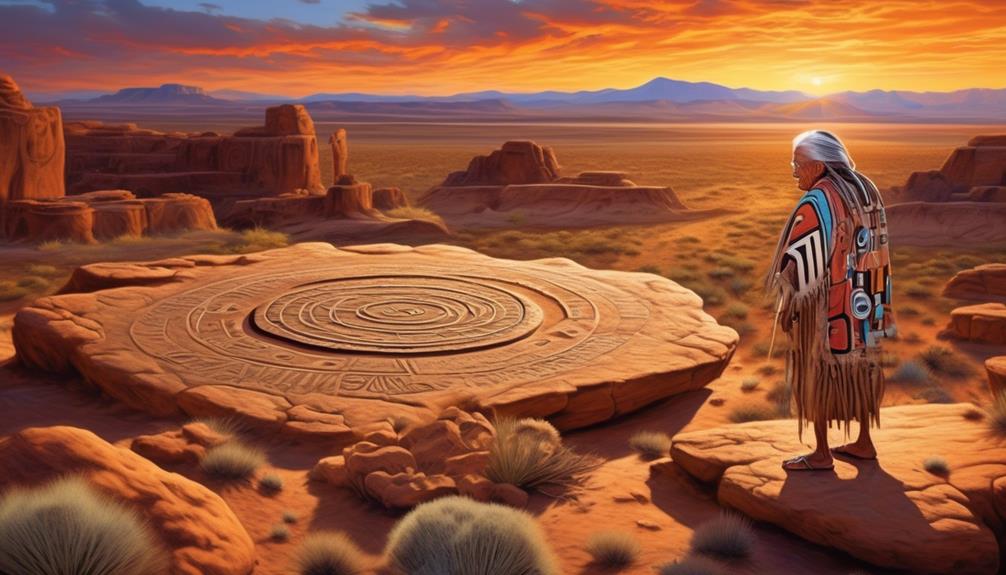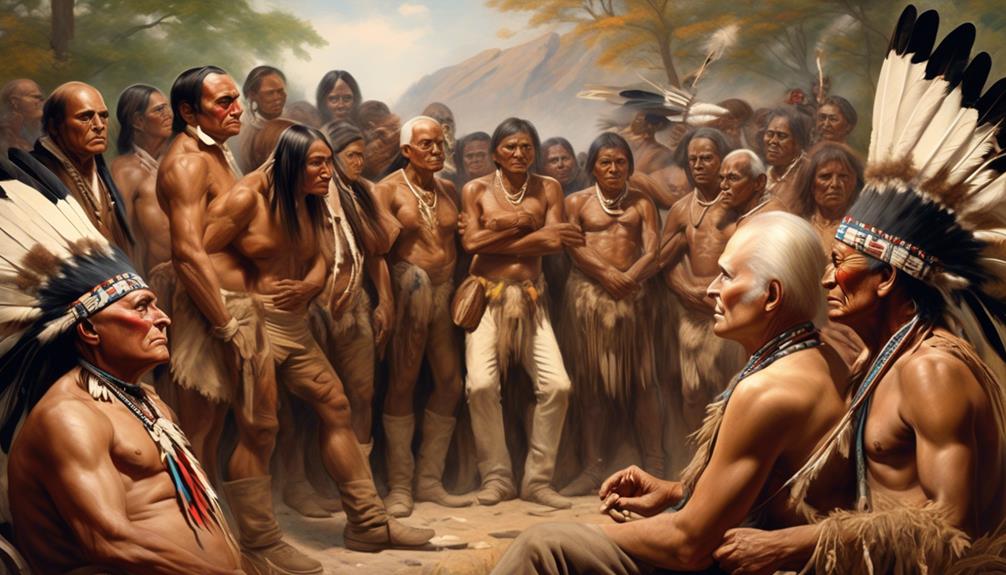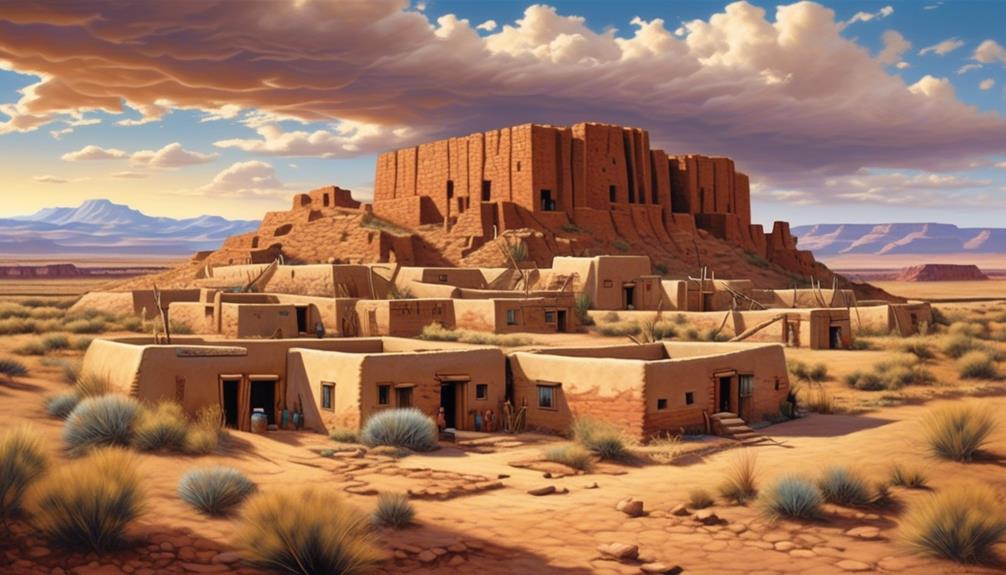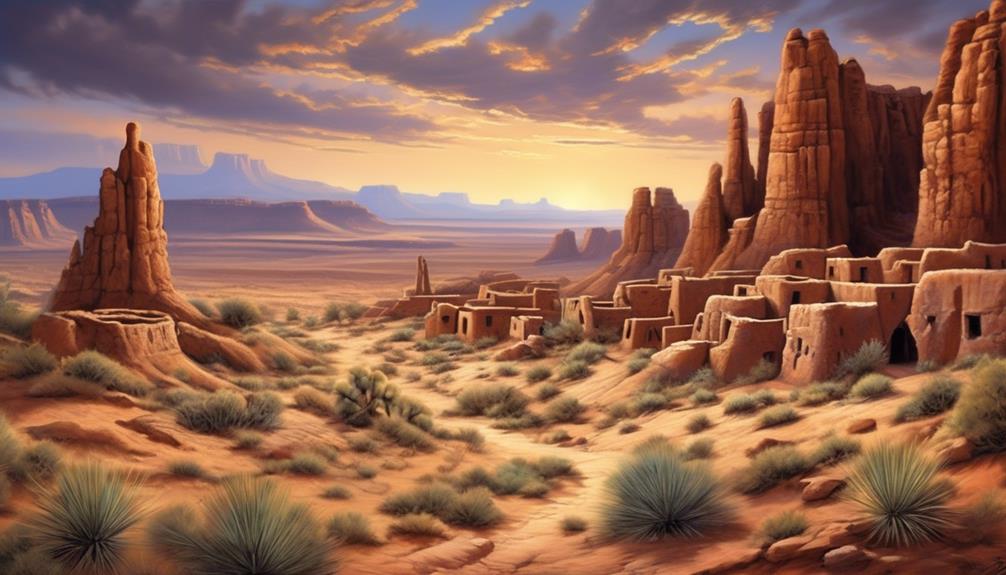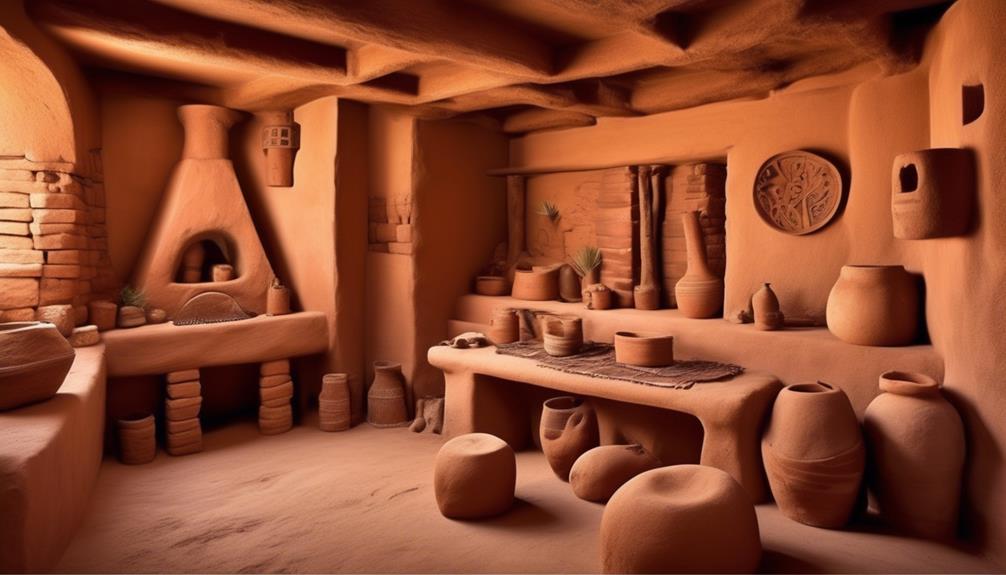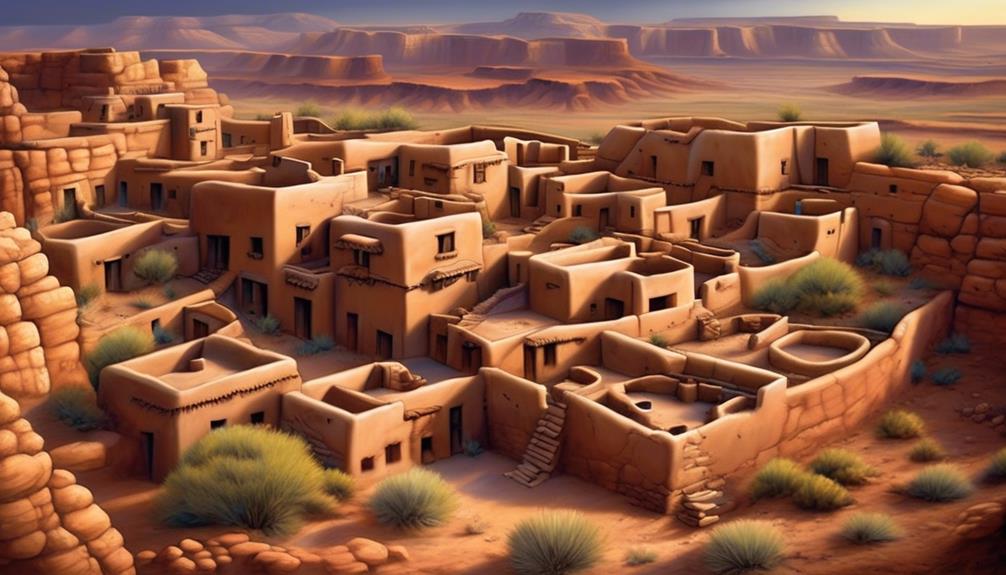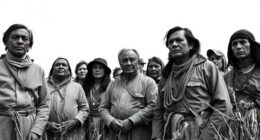When analyzing the Hopi prophecy, it’s hard not to notice parallels with other ancient prophecies that have captivated individuals from various cultures and time periods.
The Hopi, often referred to as the 'chosen tribe,' have long been regarded as the keepers of a profound and enigmatic prophecy. But what sets the Hopi apart? What is it about their teachings and way of life that has led to this distinction?
These questions compel us to explore the origins, key elements, and contemporary significance of the Hopi prophecy, shedding light on its global relevance and enduring impact.
Key Takeaways
- The Hopi prophecy is rooted in the ancient traditions and spiritual beliefs of the Hopi people.
- It emphasizes the responsibility of the present generation for the future impact and stresses the importance of understanding natural cycles and interconnectedness of life.
- The Hopi prophecy is integrated into the Hopi way of life, shaping cultural traditions, community values, agricultural practices, and social interactions.
- The significance of the Hopi prophecy lies in its valuable insights for sustainable living, ecological preservation, unity, cooperation, cultural diversity, and addressing pressing global challenges.
Origins of Hopi Prophecy
The origins of the Hopi prophecy can be traced back to the ancient traditions and spiritual beliefs of the Hopi people, providing insight into their cultural heritage and worldview.
The Hopi, a Native American tribe residing primarily in northeastern Arizona, have a rich tapestry of spiritual beliefs that form the foundation of their prophecy.
Central to their belief system is the concept of Maasaw, the caretaker and guardian of the earth, who bestowed upon the Hopi the responsibility of preserving the natural order and maintaining balance in the world. This spiritual charge is intricately woven into the fabric of the Hopi prophecy, which outlines the path that the Hopi people must follow to fulfill their sacred duty.
The spiritual beliefs of the Hopi are deeply intertwined with the natural world, and their prophecy reflects this harmonious relationship. Through ceremonial rituals, oral traditions, and sacred teachings, the Hopi have safeguarded their spiritual heritage for generations, passing down the wisdom encapsulated in their prophecy.
The origins of the Hopi prophecy thus represent a profound connection to the land, the cosmos, and the divine forces that guide their existence.
Key Elements of Hopi Teachings
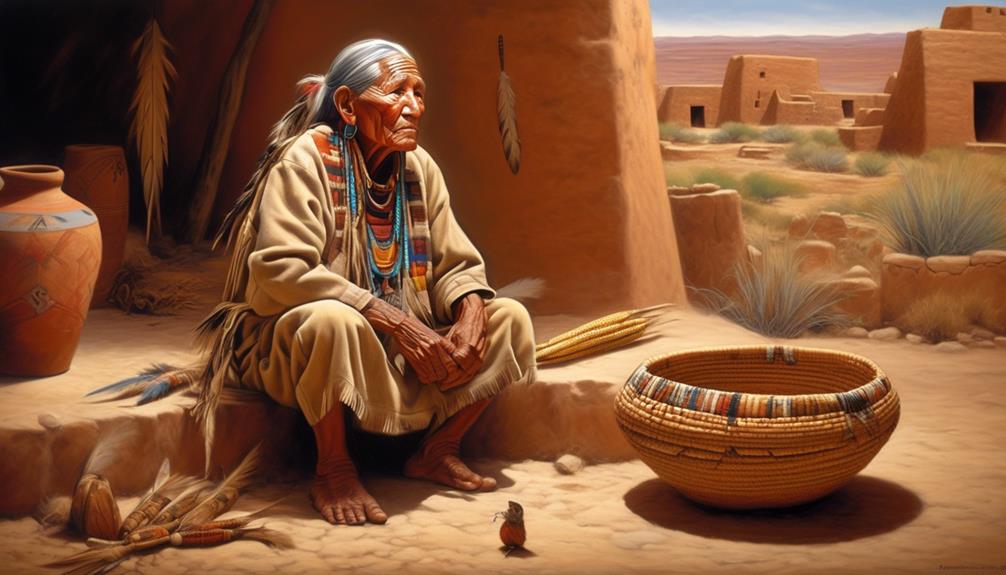
Deeply rooted in the spiritual beliefs of the Hopi people, the key elements of their teachings emphasize the interconnectedness of all living beings and the importance of maintaining harmony with the natural world. The profound spiritual wisdom passed down through generations encompasses several essential elements:
- Prophecy and Future Generations: Hopi teachings emphasize the responsibility of the present generation to consider the impact of their actions on the future. The prophecies guide the Hopi in their choices, reminding them of the interconnectedness of all life and the importance of preserving the earth for future generations.
- Cycles of Nature and Life: Central to the Hopi teachings is the understanding of the natural cycles and the interconnectedness of all life forms. The wisdom of the Hopi encourages living in harmony with the natural world and respecting the balance and rhythms of nature.
- Spiritual Ceremonies and Rituals: The Hopi uphold a rich tradition of spiritual ceremonies and rituals that are integral to their teachings. These ceremonies are designed to maintain balance and harmony within the community and with the natural world, fostering a deep spiritual connection with the earth and its inhabitants.
The depth of Hopi teachings reflects a profound understanding of the interconnectedness of life and the spiritual wisdom that guides their harmonious existence.
Prophecy and the Hopi Way of Life
Embracing the prophecy as a guiding force, the Hopi people integrate it into their way of life, fostering a deep sense of responsibility towards future generations and the interconnectedness of all life.
The Hopi prophecy serves as spiritual guidance, shaping their cultural traditions and community values. It directs the Hopi people to live in harmony with the earth and all living beings, emphasizing the importance of stewardship and sustainability.
This prophecy influences every aspect of their lives, from agricultural practices to social interactions, instilling a profound respect for nature and the cycles of life. The Hopi way of life reflects a deep understanding of the interconnectedness of all things, inspiring a communal mindset that prioritizes the well-being of the collective over individual gain.
Through their adherence to the prophecy, the Hopi people strive to maintain the balance and harmony necessary for the continuation of life on earth. This commitment to spiritual guidance and cultural traditions not only shapes the present actions of the Hopi but also lays the foundation for a sustainable and harmonious future.
Significance of Hopi Prophecy Today
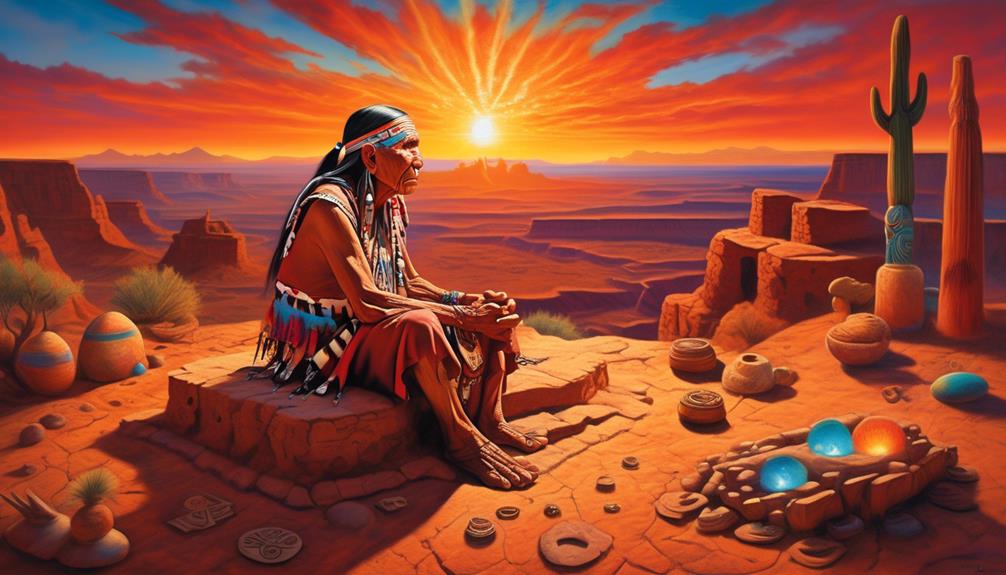
In contemporary contexts, the Hopi prophecy holds profound significance as a guiding principle for sustainable living and communal harmony. The modern interpretation of the prophecy offers valuable insights into addressing pressing global challenges and shaping a more harmonious future.
Here are three reasons why the Hopi prophecy remains relevant today:
- Environmental Stewardship: The prophecy emphasizes the importance of respecting and preserving the natural world. In an era of environmental crisis, the Hopi philosophy of living in harmony with nature offers essential lessons for sustainable practices and ecological preservation.
- Interconnectedness: The prophecy underscores the interconnectedness of all living beings. In a world characterized by division and conflict, the Hopi prophecy encourages unity and cooperation, fostering a sense of shared responsibility for the well-being of the planet and its inhabitants.
- Cultural Preservation: The prophecy serves as a powerful symbol of cultural heritage and indigenous wisdom. In an age of rapid globalization, the Hopi prophecy reminds us of the value of cultural diversity and the need to respect and preserve traditional knowledge and practices.
The modern interpretation of the Hopi prophecy thus offers a timeless message that resonates with the urgency of contemporary global challenges while emphasizing the importance of cultural preservation and sustainable living.
Hopi Prophecy and Global Relevance
The enduring relevance of the Hopi prophecy in addressing contemporary global challenges is evident in its emphasis on environmental stewardship, interconnectedness, and cultural preservation. The Hopi prophecy holds global impact as it advocates for living in harmony with nature and respecting the interconnectedness of all living beings. This spiritual significance is increasingly important in today's world, where environmental degradation and cultural erosion threaten the well-being of the planet and its inhabitants.
| Environmental Stewardship | Interconnectedness | Cultural Preservation |
|---|---|---|
| Advocates living in harmony with nature | Emphasizes the interdependence of all life | Preserves traditional knowledge and practices |
The prophecy's call for environmental stewardship resonates with the urgent need for sustainable practices to combat climate change and protect the Earth's ecosystems. Furthermore, its emphasis on interconnectedness aligns with the growing recognition of the global community's interdependence. Lastly, the focus on cultural preservation underscores the value of diverse cultural heritage in fostering understanding and unity in an increasingly interconnected world. Thus, the Hopi prophecy offers valuable insights and guidance for addressing pressing global challenges.
Frequently Asked Questions
What Specific Rituals or Ceremonies Do the Hopi People Perform in Relation to Their Prophecy?
In relation to their prophecy, the Hopi people perform various rituals and ceremonial practices that hold deep cultural significance and foster a strong spiritual connection.
These rituals often involve traditional dances, prayers, and offerings to honor their ancestors and seek guidance from the spiritual realm.
Through these practices, the Hopi maintain their cultural identity and strengthen their connection to their prophecy, upholding ancient traditions that have been passed down through generations.
How Do the Hopi People Interpret and Respond to Modern Global Events in Relation to Their Prophecy?
We interpret modern global events through the lens of our prophecy, seeking signs and patterns. Our response involves performing ceremonies and rituals that align with our traditional teachings.
The interpretation of these events often guides our community's actions and decisions, as we strive to uphold the wisdom passed down through generations.
Our commitment to these practices reflects our deep respect for our cultural heritage and the guidance it provides in navigating contemporary challenges.
Are There Any Specific Roles or Responsibilities Within the Hopi Tribe Related to the Preservation and Interpretation of the Prophecy?
In the Hopi tribe, preservation and interpretation of the prophecy are central to our cultural identity. Each member has a role and responsibility in upholding these traditions.
Rituals and ceremonies play a vital part in passing down the wisdom of the prophecy from generation to generation. By actively participating in these practices, we ensure that the teachings are preserved and understood.
This allows us to navigate the world in accordance with our beliefs.
How Do the Hopi People View the Relationship Between Their Prophecy and Other Indigenous or Spiritual Traditions Around the World?
We see interconnected traditions in the Hopi view of spiritual similarities with other indigenous traditions globally. Our understanding acknowledges the universal threads connecting spiritual beliefs.
The Hopi recognize and respect the diversity of spiritual traditions worldwide, finding commonalities in values and teachings. We appreciate the interconnectedness and shared understanding of the spiritual world, fostering mutual respect and learning from other traditions.
What Steps Are the Hopi People Taking to Ensure That Their Prophecy and Teachings Are Passed Down to Future Generations?
To ensure the passing of our traditions, we focus on preserving our oral history through educational programs.
Our cultural preservation efforts involve teaching the next generations about our prophecy and teachings.
By incorporating these values into our educational programs, we aim to ensure that the knowledge is passed down.
This approach enables us to maintain the integrity of our traditions and fulfill our responsibility to safeguard our heritage for future generations.
Conclusion
In conclusion, the Hopi prophecy holds deep significance for the Hopi people and the world at large. Its origins, teachings, and way of life are integral to understanding its impact today.
As we reflect on the global relevance of the Hopi prophecy, we're left to ponder: What can we learn from the wisdom and foresight of the Hopi people as we navigate the challenges of our modern world?
